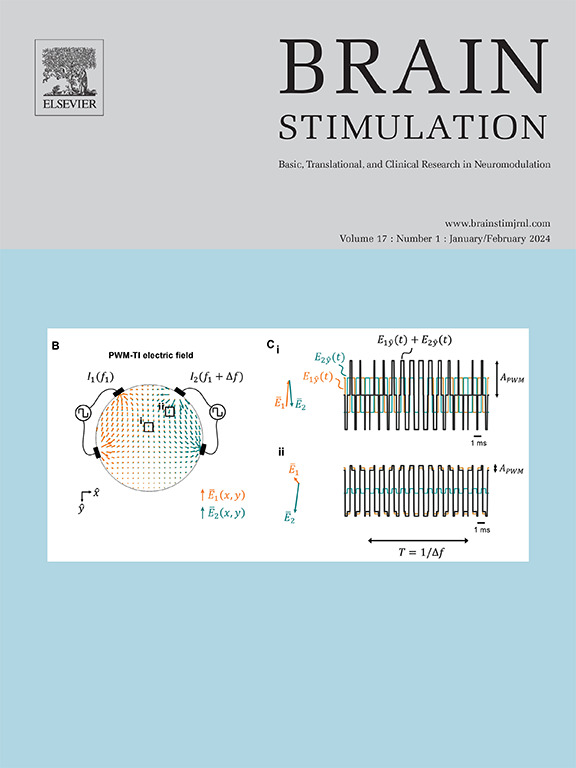经颅超声刺激参数与效果之间的关系。
IF 8.4
1区 医学
Q1 CLINICAL NEUROLOGY
引用次数: 0
摘要
经颅超声刺激(TUS)在非侵入性人体神经调控中的应用正在迅速扩大,因此迫切需要制定能最大限度提高神经调控功效的方案。在本综述中,我们汇总并研究了可调 TUS 参数与体外和体内结果之间关系的经验证据。基于这种多尺度方法,TUS 研究人员可以就最佳参数设置做出更明智的决定。重要的是,我们还讨论了从先前的经验工作中推断结果到未来的干预措施所面临的挑战,包括模型之间协议的转换以及 TUS 协议与大脑之间复杂的相互作用。对经验证据的综合分析表明,在亚兆赫范围内的较低频率、比迄今为止常用的更高强度和压力以及更长的脉冲和脉冲训练持续时间下,将观察到更大的效果。尽管如此,我们还是要强调,在为人类神经调控制定完善的 TUS 参数时,在根据先前的工作制定方案时,需要谨慎解读来自不同实验范例的经验数据。本文章由计算机程序翻译,如有差异,请以英文原文为准。
The relationship between parameters and effects in transcranial ultrasonic stimulation
Transcranial ultrasonic stimulation (TUS) is rapidly gaining traction for non-invasive human neuromodulation, with a pressing need to establish protocols that maximise neuromodulatory efficacy. In this review, we aggregate and examine empirical evidence for the relationship between tunable TUS parameters and in vitro and in vivo outcomes. Based on this multiscale approach, TUS researchers can make better informed decisions about optimal parameter settings. Importantly, we also discuss the challenges involved in extrapolating results from prior empirical work to future interventions, including the translation of protocols between models and the complex interaction between TUS protocols and the brain. A synthesis of the empirical evidence suggests that larger effects will be observed at lower frequencies within the sub-MHz range, higher intensities and pressures than commonly administered thus far, and longer pulses and pulse train durations. Nevertheless, we emphasise the need for cautious interpretation of empirical data from different experimental paradigms when basing protocols on prior work as we advance towards refined TUS parameters for human neuromodulation.
求助全文
通过发布文献求助,成功后即可免费获取论文全文。
去求助
来源期刊

Brain Stimulation
医学-临床神经学
CiteScore
13.10
自引率
9.10%
发文量
256
审稿时长
72 days
期刊介绍:
Brain Stimulation publishes on the entire field of brain stimulation, including noninvasive and invasive techniques and technologies that alter brain function through the use of electrical, magnetic, radiowave, or focally targeted pharmacologic stimulation.
Brain Stimulation aims to be the premier journal for publication of original research in the field of neuromodulation. The journal includes: a) Original articles; b) Short Communications; c) Invited and original reviews; d) Technology and methodological perspectives (reviews of new devices, description of new methods, etc.); and e) Letters to the Editor. Special issues of the journal will be considered based on scientific merit.
 求助内容:
求助内容: 应助结果提醒方式:
应助结果提醒方式:


